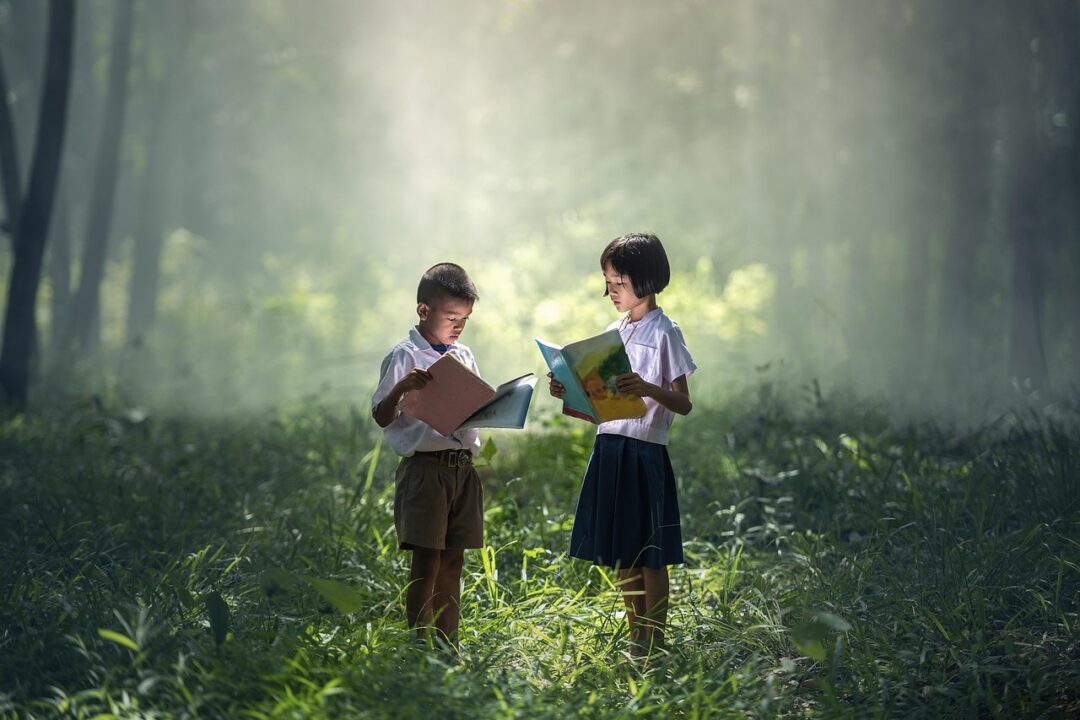For those captivated by the raw beauty and unforgiving challenges of the Alaskan wilderness in “Into the Wild,” a world of literature beckons the adventurous spirit. These books promise to transport readers into the depths of the wild, offering tales of courage, self-discovery, and the relentless pursuit of the unknown.
Embark on a Literary Journey with These Compelling Titles
Embark on a literary expedition that will lead you through the harshest environments across the globe and into the depths of the human spirit.
1. “Wild: From Lost to Found on the Pacific Crest Trail” by Cheryl Strayed

Cheryl Strayed’s memoir is a beacon of transformation, capturing her solo trek along the Pacific Crest Trail. It’s a journey marked by physical endurance and the healing power of nature as she confronts her demons and the rugged beauty of the trail.
Readers are invited to walk alongside Strayed, sharing her moments of despair, determination, and ultimate redemption. The narrative delves deep into the heart of non-fiction books that inspire and challenge.
Strayed’s candid portrayal of her battle against the elements and her fears is a powerful reminder of the human capacity for endurance and the profound impact of solitude in the wild.
2. “The Call of the Wild” by Jack London
Jack London’s classic novel, though a departure from non-fiction, captures the essence of primal wilderness through the eyes of Buck, a domesticated dog turned sled leader in the frigid Yukon. The story’s exploration of survival, instinct, and the call of the wild resonates with the themes of human adventure and the transformative power of nature.
As readers follow Buck’s journey from comfort to savagery, they are reminded of the thin veil between civilization and the untamed world. London’s vivid descriptions and gripping narrative continue to inspire those drawn to the raw and unpredictable heartbeat of the wilderness.
3. “A Walk in the Woods: Rediscovering America on the Appalachian Trail” by Bill Bryson
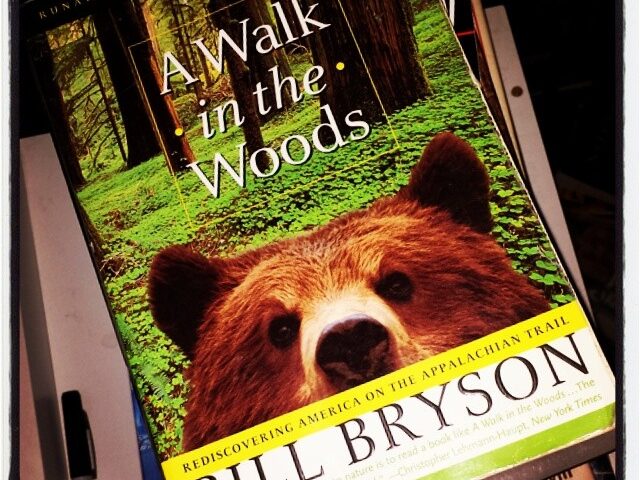
Bill Bryson’s humorous and insightful account of attempting to hike the Appalachian Trail offers a lighter take on the adventure genre. With wit and self-deprecation, Bryson explores the trail’s history and ecology while recounting the challenges faced by a novice hiker.
Readers are treated to a blend of laugh-out-loud anecdotes and thoughtful musings on the natural world, making “A Walk in the Woods” a delightful read for avid hikers and armchair explorers. Bryson’s journey along the Appalachian Trail is as much about the people he meets as it is about the landscapes he traverses.
4. “Into Thin Air: A Personal Account of the Mt Everest Disaster” by Jon Krakauer
Jon Krakauer’s gripping account of the 1996 Mount Everest disaster is a harrowing testament to the perils of high-altitude climbing. The highest peak on Earth becomes a stage for a tale of ambition, heroism, and tragedy.
Krakauer’s narrative weaves together the fates of the climbers, offering an intimate look at the limits of human endurance. “Into Thin Air” takes readers on a journey to the summit and delves into the ethical and logistical complexities of modern expeditions.
Krakauer’s firsthand experience and journalistic expertise create a powerful chronicle of one of mountaineering’s darkest moments.
5. “Desert Solitaire” by Edward Abbey
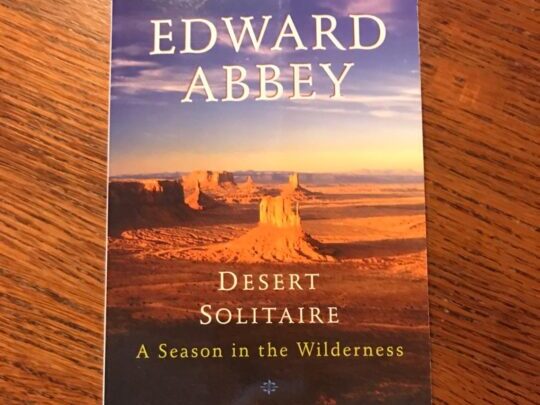
In “Desert Solitaire,” Edward Abbey presents a lyrical homage to the natural world, particularly the stark beauty of Arches National Park. Abbey’s reflections on the desert landscape, flora, fauna, and the impact of human encroachment are as relevant today as when they were first published.
His writing is a clarion call for preserving wilderness, articulating a philosophy that intertwines nature and the human experience. Abbey’s prose invites readers to contemplate the solitude and majesty of the desert.
Through his eyes, we witness the grandeur of the natural world and the importance of maintaining a connection to it, even as it faces the pressures of a modern world.
6. “Endurance: Shackleton’s Incredible Voyage” by Alfred Lansing
Alfred Lansing’s “Endurance” recounts Ernest Shackleton’s extraordinary Antarctic expedition, a survival story testament to human resilience. Shackleton and his crew’s struggle against the unforgiving elements of the natural world is rendered with such vivid detail that readers can almost feel the icy wind on their faces.
The narrative captures the indomitable spirit of exploration and the leadership of Shackleton, whose unwavering determination led his men through one of history’s most remarkable survival sagas. Lansing’s account is a tribute to the courage and fortitude that define the age of Antarctic exploration.
7. “The River of Doubt: Theodore Roosevelt’s Darkest Journey” by Candice Millard
Candice Millard’s “The River of Doubt” chronicles Theodore Roosevelt’s perilous expedition down an uncharted tributary of the Amazon. This narrative details the treacherous conditions and the fierce determination of Roosevelt and his companions as they face the unknown.
Millard’s meticulous research paints a portrait of a president turned explorer, driven by his thirst for adventure and discovery. The book delves into the historical and personal aspects of Roosevelt’s journey, revealing the physical and emotional challenges that pushed the expedition to the brink of disaster.
It is a compelling account of bravery and survival in one of the world’s most hostile environments.
8. “Touching the Void: The True Story of One Man’s Miraculous Survival” by Joe Simpson
Joe Simpson’s “Touching the Void” is a gripping story of adventure and survival that recounts his near-fatal climb in the Peruvian Andes. Against all odds, Simpson survives a fall and, with a broken leg, crawls back to base camp.
His harrowing tale is one of sheer willpower and the human spirit’s capacity to endure against seemingly insurmountable odds. The narrative is a testament to Simpson’s survival and an exploration of the deep bond between climbers and the psychological toll of such an extreme ordeal.
“Touching the Void” stands as a classic in mountaineering literature, etching an unforgettable story of tenacity and resilience into the minds of its readers.
9. “Tracks: A Woman’s Solo Trek Across 1700 Miles of Australian Outback” by Robyn Davidson
Robyn Davidson’s memoir, “Tracks,” captures her daring solo journey across the Australian desert to the sea. Accompanied by camels and a dog for company, Davidson’s narrative is as much about self-discovery as the physical journey.
Her vivid descriptions of the landscape, the challenges of her trek, and the people she encounters along the way offer a unique perspective on the transformative power of travel.
Davidson’s memoir is a candid account of the trials and triumphs of such a formidable expedition. Her story is a testament to the strength found in solitude and the profound connection to the land that can only be forged by traversing it step by step.
10. “The Stranger in the Woods: The Extraordinary Story of the Last True Hermit” by Michael Finkel

Michael Finkel’s “The Stranger in the Woods” tells the remarkable story of Christopher Knight, who lived in seclusion in the Maine woods for 27 years. Finkel’s exploration of Knight’s solitary life, the reasons behind his self-imposed exile, and the impact of his eventual discovery by society raises profound questions about the nature of solitude and the need for community.
The narrative delves into the philosophical and practical aspects of a life lived off the grid. Knight’s story challenges readers to consider the value of modern conveniences versus the simplicity and clarity that can come from a life stripped to its essentials.
Delve Deeper Into the Wild with These Memoirs and Biographies
For those drawn to the untamed and the unknown, memoirs and biographies offer an intimate glimpse into lives shaped by the wilderness. These stories go beyond adventure, delving into the wild truth of human existence and the landscapes that mold it.
11. “The Wild Truth: A Memoir” by Carine McCandless
Carine McCandless’s “The Wild Truth” is a poignant exploration of the family dynamics and personal history underpinning the life of her brother, Chris McCandless, the subject of “Into the Wild.”
Carine offers an unflinching look at the McCandless family, providing context and understanding of Chris’s fateful journey into the Alaskan wilderness. The memoir is a testament to the complexity of familial relationships and the individual quest for meaning.
Carine McCandless’s voice adds depth to the narrative that has captivated readers, making “The Wild Truth” an essential companion to her brother’s story.
12. “The Lost City of Z: A Tale of Deadly Obsession in the Amazon” by David Grann
David Grann’s “The Lost City of Z” is a riveting account of the British explorer Percy Fawcett’s quest to find an ancient civilization in the Amazon jungle. Grann interweaves Fawcett’s story with his journey to uncover the truth behind the explorer’s mysterious disappearance, creating a historical and intensely personal narrative.
The book is a masterful blend of biography, history, and adventure, capturing the allure of the unknown and the human compulsion to uncover it. Much like Fawcett’s pursuit of the Lost City, Grann’s pursuit of the story becomes an obsession that draws readers into the heart of the Amazon and the enigma that has captivated imaginations for decades.
13. “The Final Frontiersman: Heimo Korth and His Family, Alone in Alaska’s Arctic Wilderness” by James Campbell
In “The Final Frontiersman,” James Campbell narrates the epic adventure of Heimo Korth, who turned his back on civilization to raise his family in the brutal Alaskan wilderness.
This tale of survival showcases the Korth family’s daily battle against unforgiving nature, their resilience, and their profound bond with the land and each other. Readers will be transported to the stark beauty and isolation of Alaska’s Arctic, where the Korths carve out a life far removed from the trappings of modern society.
Campbell’s portrayal delivers a vivid account of the challenges and triumphs faced when one chooses a life in the wild.
14. “Adrift: Seventy-Six Days Lost at Sea” by Steven Callahan
“Adrift” presents the harrowing tale of survival of Steven Callahan, who survived for over two months on a life raft after his sailboat sank in the Atlantic Ocean. His story is a testament to the human spirit and endurance as he faced storms, sharks, and the vast emptiness of the sea with nothing but a small raft and his wits.
Callahan’s memoir captures the essence of a fight for life on the open waters, offering readers an intimate look into the mind of a man pushed to his limits. The book is a profound reminder of the resilience required to overcome insurmountable odds.
15. “The Snow Leopard” by Peter Matthiessen
Peter Matthiessen’s “The Snow Leopard” is a mesmerizing story of adventure and survival that chronicles his journey through the Himalayas, seeking both the elusive snow leopard and a deeper understanding of himself. As a spiritual quest intertwined with natural exploration, the book delves into themes of grief, science, and mysticism.
Matthiessen’s introspective narrative invites readers to contemplate the interconnectedness of life and the transcendent beauty of the natural world. His quest reflects a profound journey of personal transformation and enlightenment set against the backdrop of the majestic Himalayan landscape.
Discover the Thrill of Survival and Self-Discovery
These compelling narratives provide more than just entertainment; they offer insights into the human condition, showcasing the indomitable will to survive and the transformative power of self-discovery. If you’re interested in how-to survival books that blend real-life grit with practical wisdom, explore this book list featuring some of the most gripping and inspiring titles. Each true story serves as a testament to individuals’ resilience and adaptability when faced with the raw forces of nature.
16. “127 Hours: Between a Rock and a Hard Place” by Aron Ralston
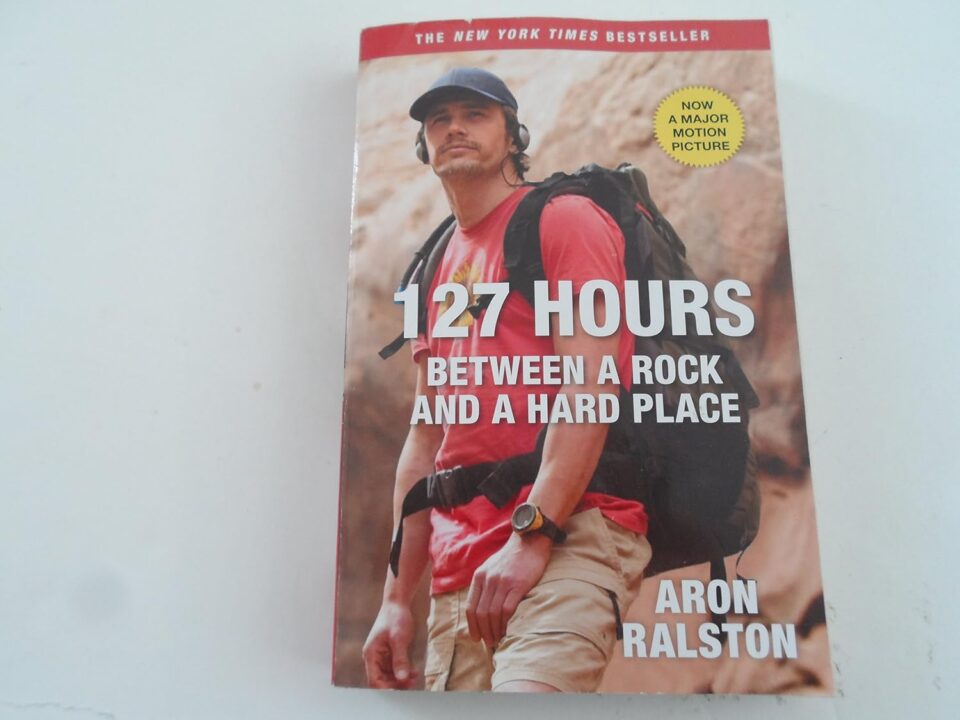
Aron Ralston’s “127 Hours: Between a Rock and a Hard Place” recounts his harrowing experience in a remote Utah canyon, where he became trapped by a boulder. Ralston’s candid and gripping narrative takes readers through his five-day ordeal, leading to the agonizing decision to amputate his arm to escape.
Through this intense survival account, Ralston’s resilience and ingenuity are on full display. His tale is a riveting exploration of the lengths to which one will go to preserve life. It is a powerful reminder of the primal instinct to survive against all odds.
17. “The Great Alone” by Kristin Hannah

Kristin Hannah’s “The Great Alone” follows a family seeking a fresh start in the wilds of 1970s Alaska, only to find that their greatest challenge lies within. The novel captures the essence of the human spirit, showcasing the characters’ struggles with the elements, each other, and their inner demons.
This vivid portrait of a family in crisis is set against the unforgiving yet beautiful Alaskan backdrop, where nature’s unpredictability mirrors human emotions’ volatility. Hannah’s evocative storytelling draws readers into a world where survival is as much about emotional resilience as battling the wilderness.
18. “The Sun Also Rises” by Ernest Hemingway
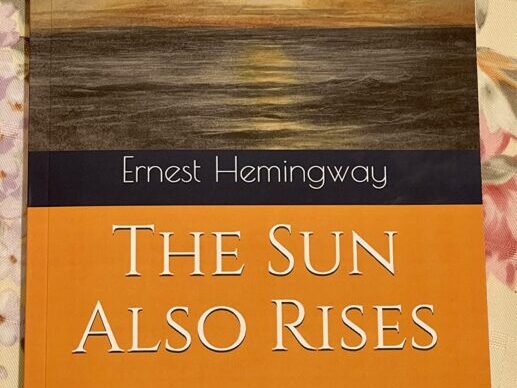
Ernest Hemingway’s “The Sun Also Rises” is a novel that encapsulates the human spirit in the post-war disillusionment of the 1920s. Through the journey of a group of expatriates traveling from Paris to Spain, Hemingway explores themes of love, loss, and the search for meaning amidst the chaos of life.
The book’s depiction of the Lost Generation reflects a deep yearning for purpose and belonging as the characters navigate the complexities of human relationships and their existential angst. Hemingway’s terse prose and keen observations reflect the resilience required to face a world that often seems indifferent.
19. “Eat, Pray, Love” by Elizabeth Gilbert

Elizabeth Gilbert’s “Eat, Pray, Love” chronicles her self-discovery following a difficult divorce. From indulging in Italy’s culinary delights to seeking spiritual enlightenment in India and finding balance in Indonesia, Gilbert’s memoir resonates with anyone seeking to redefine themselves and find happiness.
Her odyssey is a testament to the healing power of travel and the courage it takes to step out of one’s comfort zone. The memoir celebrates the human spirit as Gilbert learns to embrace life’s pleasures, relinquish control, and open her heart to love again.
20. “Unbroken: A World War II Story of Survival, Resilience, and Redemption” by Laura Hillenbrand
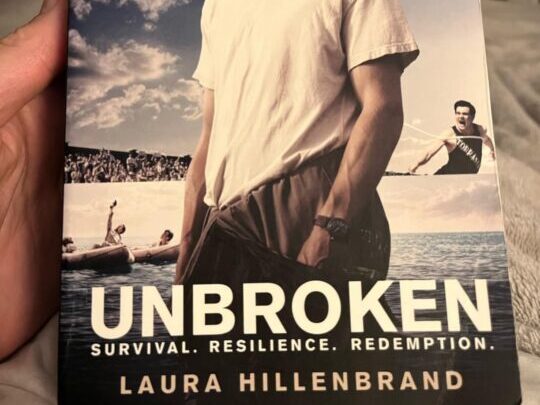
Laura Hillenbrand’s “Unbroken” tells the remarkable true story of Louis Zamperini, a former Olympic athlete who survived a plane crash, 47 days adrift at sea, and years in brutal Japanese POW camps during World War II. His tale of survival is a tribute to the resilience of the human spirit in the face of unimaginable adversity.
Hillenbrand meticulously details Zamperini’s journey from defiant youth to war hero, crafting a narrative as emotionally powerful as historically significant. Readers will be inspired by Zamperini’s ability to endure hardship, his unyielding hope, and his ultimate triumph over the darkest of circumstances.
Nature’s Call – Stories That Echo the Wilderness of “Into The Wild”
The call of the wild beckons with stories that resonate with the spirit of “Into The Wild. ” Each narrative is a journey that explores the natural world’s raw beauty and perilous challenges. These tales highlight the profound impact of wilderness experiences on the human soul.
21. “Walking the Amazon” by Ed Stafford
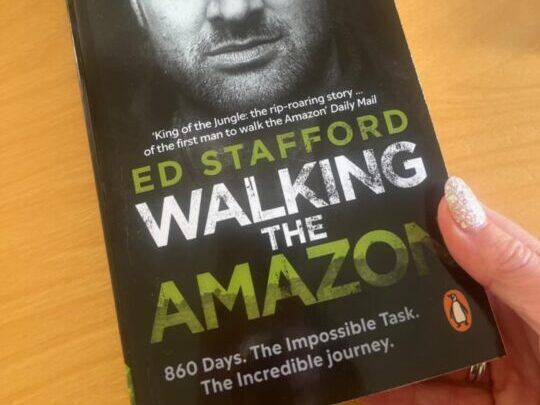
Ed Stafford’s “Walking the Amazon” is a gripping tale of survival and a testament to the human spirit. It documents his 860-day trek along the entire length of the Amazon River. Stafford’s odyssey is a testament to human endurance and determination, as he faces threats from nature, wildlife, and even humans.
His account provides an intimate look at the diverse ecosystems and cultures along the world’s largest river and the personal transformation that results from pushing the boundaries of what is humanly possible. Stafford’s journey is one of monumental achievement and inspirational courage.
22. “Everest: The West Ridge” by Thomas Hornbein
Thomas Hornbein’s “Everest: The West Ridge” is an exhilarating account of the 1963 American expedition’s pioneering ascent of Mount Everest via the treacherous West Ridge. Hornbein’s vivid storytelling places readers alongside the climbers as they confront extreme conditions and make life-or-death decisions on the world’s roof.
The book is an adventure story and a profound exploration of human ambition and the spirit of exploration. Hornbein’s reflections on the camaraderie, sacrifice, and sheer will required to conquer Everest inspire adventurers and dreamers alike.
23. “Blue Highways” by William Least Heat-Moon
In “Blue Highways,” William Least Heat-Moon sets out on a journey across America’s backroads, a network of secondary highways that offer a glimpse into the country’s heart and soul. His narrative is a rich tapestry of the places and people encountered along the way, revealing the diverse tapestry of American life.
Through his travels, Least Heat-Moon discovers the unique character of small towns and rural landscapes and gains deeper insights into his identity. “Blue Highways” celebrates the road less traveled and the unexpected discoveries that lie beyond the interstate.
Final Thoughts: The Unending Allure of Wilderness Narratives
The books mentioned above, each a captivating story of survival, embody the essence of the human spirit confronting the raw power of nature. These narratives remain timeless, from the personal transformations documented in memoirs to the fictionalized accounts of resilience.
They entertain and inspire readers to contemplate their relationship with the wilderness. The cover editions of these books may change. Still, the alternate covers always circle back to the core themes of adventure and self-discovery, much like the narratives themselves—a testament to their enduring appeal.



